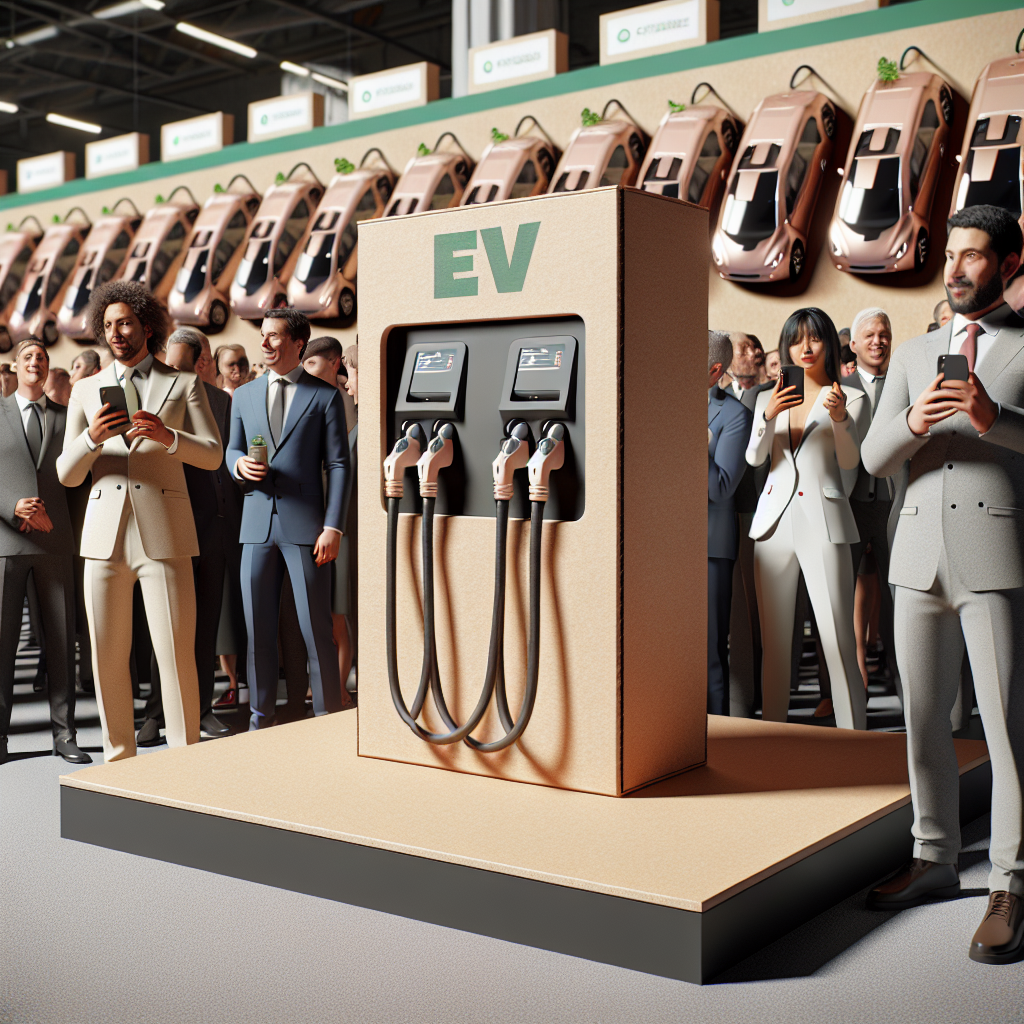In an intriguing insight into the evolving landscape of electric vehicle (EV) charging solutions, the U.K. has seen the introduction of innovative recyclable cardboard EV charging stations by Urban Electric Networks, as reported in “British start-up presents EV charging station made of cardboard” on Calcalistech.
Developed in response to the escalating demand for accessible and sustainable EV infrastructure, the startup’s groundbreaking model presents a curbside charging hub crafted primarily from cardboard. This rethinking of conventional materials comes as automakers and governments worldwide accelerate efforts to move away from fossil fuels and embrace cleaner transportation modalities.
Interestingly, the use of cardboard in the construction of these charging stations may raise eyebrows considering its durability, especially in varying weather conditions. Despite potential concerns over resilience, Urban Electric Networks assures that the life span of these recyclable structures aligns reasonably well with their technological obsolescence, offering an innovative approach towards a circular economy in EV infrastructure.
The environmentally conscious appeal of such materials considers the increased pressure on industries to reduce their carbon footprint and dependency on nonrenewable resources. Cardboard offers a significant reduction in production emissions compared to conventional materials like metal or plastic, which are typically utilized in the construction of EV chargers. Moreover, the fact that these stations are recyclable could help mitigate the issue of waste typically associated with outdated or defunct technological apparatus.
Additionally, the convenience offered by curbside charging could potentially address one of the significant hurdles in the adoption of electric vehicles—charging accessibility. The deployment of these units in urban settings can notably benefit EV owners without access to private driveways or garages, providing them a practical solution that complements their lifestyle without significant urban disruption.
The transition towards electric vehicles requires corresponding advancements in the supporting infrastructure. Urban Electric Networks’ initiative indicates a trend towards integrating sustainability not just in vehicle production but expansively throughout allied industries, including infrastructure. By conceptualizing an EV charging solution that embodies sustainability from production through disposal, the project sets a commendable example of environmental stewardship in technology development.
These efforts come at a time when governments across the globe are enforcing stricter regulations on emissions and setting ambitious goals for electric vehicle adoption. The U.K., for instance, aims to halt sales of new petrol and diesel cars by 2030, underscoring the need for robust, efficient, and widely accessible charging networks.
As more such innovations enter the market, the focus will invariably shift to assessing their practical application, consumer acceptance, and the actual impact on urban landscapes and ecosystems. Future investigations and studies will undoubtedly monitor the longevity and real-world functionality of the cardboard charging stations, providing deeper insights into the viability of using alternative materials in critical infrastructure.
This model by Urban Electric Networks encapsulates the potential shift towards a more sustainable and adaptive approach to EV charging infrastructure, which could play a crucial role in supporting global transitions to cleaner transportation technologies. As the world inches closer to broader EV adoption, the importance of such innovations becomes increasingly significant, offering lessons and inspirations for future developments in eco-friendly technology solutions.



